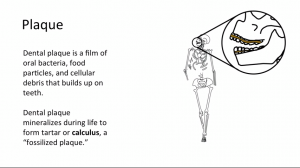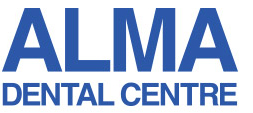Preventative dentistry is a critical area of concern for our dental practice because the health of our mouth is closely linked to the health of the rest of our body. The ability to chew, the ordering and alignment of the teeth, the health of the gums and tooth structure has a strong relationship with our long-term health and wellness over generations.
The relationship is so powerful that it inspired a researcher from the University of Zurich to track ancient diseases through dental calculus (a.k.a plaque).
But Why Track Plaque?
“We can generate immense quantities of data [from dental calculus] that then we can use to begin to reconstruct a detailed picture of the dynamic interplay between diet, infection and immunity, thousands of years ago.” Christina Warinner – Archaeological geneticist
We hope you enjoy this TED Talk as much as we did. You can learn more about Ms. Warinner’s fascinating work in evolutionary medicine here. Below is a brief overview on plaque, tartar and dental hygiene.
What is Dental Plaque?

Dental plaque is a film of oral bacteria, food particles, and cellular debris that builds up on teeth.
Dental plaque is material that adheres to the teeth, consisting predominantly of bacterial cells, salivary polymers, and bacterial extracellular products. Plaque is a naturally-constructed biofilm, in which the consortia of bacteria may reach a thickness of 300-500 cells on the surfaces of the teeth. The accumulation of bacteria on the teeth and gums in high concentration of bacterial leads to dental disease and infections.
What is Tartar?
Tartar, also called calculus, is a crusty deposit that can trap stains on the teeth and cause discolouration. Calcium and phosphate bind to form crystals on the teeth. These calcium phosphate crystals eventually harden within plaque, forming calculus. Certain types of chemicals called pyrophosphates help to decrease calculus buildup by stopping the growth of crystals on the tooth surface and preventing new crystals from forming. Tartar creates a strong bond that can only be removed by a dental professional. Its formation may also make it more difficult to remove new plaque bacteria, thus potentially creating problems further down the road.
Dental Hygiene for the long term
Plaque and tartar do not affect everyone in the same way; individuals vary greatly in their susceptibility and resistance. For many of us, these deposits build up faster as we age, meaning the older you get, the more closely you have to monitor your dental hygiene routine. There are, however, several ways in which you can alter your dental hygiene practices to help protect your teeth from the buildup of plaque and tartar.
- Having your teeth cleaned professionally every six months, or more frequently as recommended by your dentist or hygienist
- Brushing with a toothpaste that contains pyrophosphate, such as Crest® Tartar Protection, which adheres to the tooth surface and inhibits the formation or growth of calculus crystals
- Brushing with tooth pastes, which contain sodium hexametaphosphate, a pyrophosphate specially formulated to inhibit and loosen calculus
Sources: Oral B, TED, Christina Warinner

